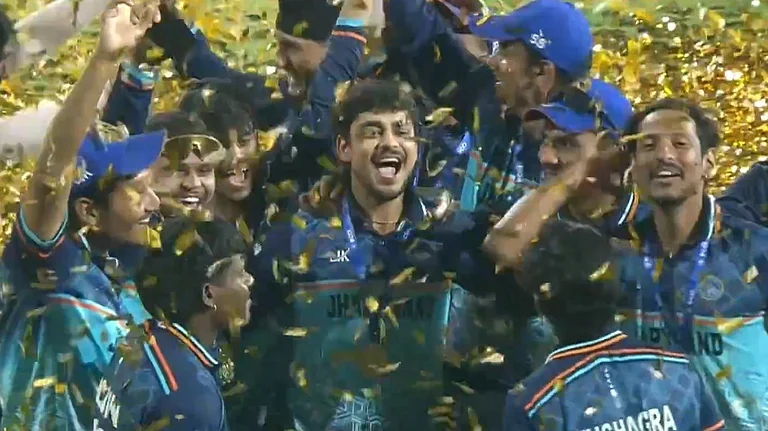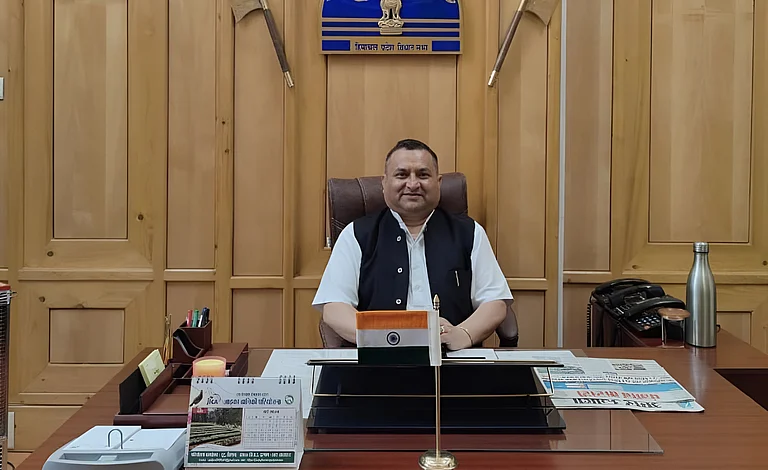Theoretically, dynastic rule is antithetical to democracy, but it has found fertile soil in most constitutional governments. America had the Kennedy and the Bush Dynasties. Both families dominated American politics at different times in the last 76 years. India also had the Nehru-Gandhi Dynasty, which held the centre stage of Indian politics for over a century.
For nearly 40 years, India was ruled by leaders belonging to the Nehru-Gandhi clan. In our neighbourhood, Bangladesh politics has been dominated by two Begums belonging to two different dynastic families in the country. Sri Lanka is not to be left behind in this domination of politics by a few families.
The Bandaranaike, the Premadasa and now, the Rajapaksha have ruled Sri Lanka after its independence with complete dominance. Our immediate neighbour, Pakistan, has also seen the Bhutto clan and now the Nawaz Sharif family rule over the country. So, we observe that dynastic politics has flourished in developing countries like India, Sri Lanka, Bangladesh, and Pakistan, as well as developed countries such as America and Canada.
For the past 58 years, Haryana politics has been dominated by nearly two dozen families.
Three of the Lals, i.e. Bansi Lal, Bhajan Lal and Devi Lal had near absolute dominance in state politics until the rise of Bhupinder Singh Hooda in 2004. Hooda became the Chief Minister, and also belonged to a political dynasty, as his father had represented Rohtak in both, the Assembly and the Lok Sabha. Hooda remained Chief Minister for nearly 10 years, and once again, in 2024, he is the top contender for the position of Chief Minister.
Chaudhary Devi Lal's dynasty could definitely be called the first dynast family of Haryana because, from this family, nine members were elected to the Assembly, Lok Sabha or Rajya Sabha in the last 77 years of India's independence. Seven times, a member of this family was elected as the Chief Minister of the state. Six times, a member of this family was elected to the Lok Sabha and 26 times to the Haryana Assembly.
Only after 2014 did we observe that the space for the Devi Lal family has shrunk as this space has now been occupied by the BJP. Now, the influence of this family is confined only to their pocket borough of Sirsa; they are trying to hold on to their own, but times have changed.
The second dynastic lineage that dominated Haryana politics was that of Chaudhary Bansi Lal, who became the Chief Minister of Haryana in 1968, was very close to the Gandhi family and also became a Union Minister in Indira Gandhi's cabinet. After Bansi Lal, his two sons, daughter-in-law and granddaughter played an important role in Haryana's politics.
Bansi Lal was the Chief Minister thrice, and members of his family were elected to Haryana's assembly 15 times and 9 times to the Lok Sabha and the Rajya Sabha. Now, one can see a clear decline in the fortunes of this family as their efforts are to somehow maintain their influence in their home ground of Bhiwani district. This family can no longer be considered to be impacting the politics of the whole state.
The other dynasty comprising the three Lals is that of Bhajan Lal, who is known for his about turn when he joined Congress with his whole cabinet in 1980 when Mrs Indira Gandhi returned to power after the break-up of the Janta Party experiment.
This family was represented in the Haryana Assembly 17 times, and members of this family were elected to the Indian Parliament six times. Bhajan Lal served as the Chief Minister thrice and was also a member of the Union Cabinet. The decline in the fortunes of this family is very clear from the fact that they are now trying to save their presence in state politics by confining themselves to just one district, i.e. Hisar.
There are other families/dynasties whose influence was limited to certain pockets of the State, and they did not have considerable strength to dominate the politics of the whole State. The three Lals held a solid grip over the affairs of Haryana. Such regional satraps would comprise the Jindals who hold influence in Hisar, and two generations of this family have had representation in the Haryana Assembly and the Lok Sabha.
Recently, Naveen Jindal was elected as a member of the Lok Sabha. Kumari Selja again comes from a family that has played a significant role in Haryana politics. Her father, Dalbir Singh, was a Union Minister, and she herself was a Minister in the Central Government. Another family that needs to be mentioned is that of Birender Singh the grandson of legendary peasant leader Sir Chotu Ram. A member of this family has been elected a number of times to the Assembly and the Lok Sabha in the last 50 years.
South Haryana has been dominated by the family of Rao Birender Singh, who was elected to the Lok Sabha five times and served as a Union Minister. Rao Birender Singh also has the distinction of becoming the first non-congress Chief Minister of Haryana in 1967.
Ahirwal politics has been completely dominated by this family for nearly three generations. Rao Inderjeet, the scion of this family, has been elected to the Lok Sabha six times and clamouring for the post of Chief Minister of the State but has not been successful so far because his influence is confined to only three districts of South Haryana. Rao Inderjeet is trying to bring his daughter into politics by seeking nomination from the BJP for the upcoming Assembly elections. There are other families who have held influence in certain pockets of the State, such as Bhadana of Faridabad or the Chiranjee Lal Sharma family in Sonipat district.
Haryana politics has been dominated by nearly two dozen families, and what we observe is that the influence of these hereditary elites is on the decline, especially after 2014 with the ascendancy of the BJP both at the National level and in the State of Haryana. Most of these elites had their origin in the Congress Party, and with the rise of the BJP in the State, these elites are somehow trying to save their political space by confining themselves to their home ground and leaving aside their aspirations of dominating the state politics. The influence of the three Lals' families is now only confined to their home districts. The same is the case with Ahirwal, where Rao Inderjeet is somehow trying to pass the political baton to his daughter.
Now, in the coming Assembly elections, the fate of another dynasty is at stake, i.e. of the Hoodas. Three generations of Hooda have dominated the politics of the Rohtak district and the State. For ten times, the Rohtak Lok Sabha has been represented by three generations of the Hooda family. Bhupinder Singh Hooda has emerged as the chief challenger to the BJP and, to a great extent, has also been successful in mobilizing the electorate all over the State.
Bhupinder Singh Hooda is at present the only leader in both Congress and the BJP who could single-handedly influence at least 20 Assembly seats. No other leader in the Congress or the BJP has such mammoth influence to make a difference in the outcome of the Assembly elections. The mute question is whether Bhupinder Singh Hooda would be able to ride over the tide which turned against dynastic politics after 2014. Most of the families who have held power in Haryana have seen the decimation of their influence and are now simply trying to save some space in politics by joining the BJP or Congress as per their exigency.
Manohar Lal Khattar, who was the BJP's Chief Minister for nearly 10 years, was the first leader not to come from these established elites and, in the process, has started a motion for people to move away from these families. None of the elites who have been mentioned except for the Hooda are in a position to occupy the lead political position, i.e. Chief Ministership of the State.
One could observe a process of elite circulation wherein the established elites lose their power, and new elites replace the old ones. Bhupinder Singh Hooda would face this challenge of survival not only from his rivals in the BJP but also from his detractors within the Congress.
These elections would decide whether the established patterns of dynastic politics would continue or if there could be a change with new leaders occupying the top positions. Already, the process has set in as both Khattar and the incumbent Chief Minister Naib Singh Saini have risen from the ranks and do not owe their power to their forefathers. So, one could observe an interesting battle between the established elites, whose power is waning and the new challengers coming from the grassroots.
These elections will decide the course of the nature of politics in the State by continuing with the past by electing another dynast for the top slot or going for leaders like Manohar Lal Khattar or Naib Singh Saini.
Rajendra Sharma, is a Professor at the Department of Political Science at Maharshi Dayanand University in Rohtak, Haryana


























